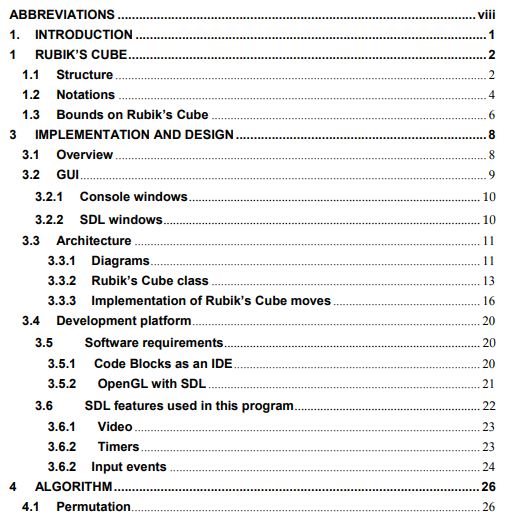‘NXNX Cube Solution’ PDF Quick download link is given at the bottom of this article. You can see the PDF demo, size of the PDF, page numbers, and direct download Free PDF of ‘XNXN Rubik’s Cube Algorithms Solution’ using the download button.
3X3X3 Rubik Cube Solution PDF Free Download

About Rubik Cube
Rubik’s Cube is probably one of the most illustrious puzzles up to date.
And the reason made it was so prominent is still not certain. Since its invention in 1974 by Hungarian sculptor and professor of architecture Erno Rubik, it has captured the imagination of millions of all ages and is widely considered to be the world’s best-selling toy.
There are competitions held every year for cube lovers to compete the records and organized by WCA (World Cube Association).
The current world record for a single time on the 3×3×3 Rubik’s Cube in competition is 5.25 seconds, set by Collin Burns in April 2015. There is a variation of cubes that are sold commercially from 2x2x2 to 7x7x7.
This paper will discuss the traditional 3x3x3 Rubik’s Cube, one that is simple enough to study and understand but complex enough to exploit and investigate from many points of view.
Structure
Six faces of the Cube will be differentiated by 6 different solid colors: white, yellow, blue, green, red, and orange.
The model we use to give the demonstrations in this thesis is: white is opposite yellow, blue is opposite green and red is opposite orange, and this is currently the most popular sold model also (Dempsey 1988.).
The face is currently facing you when you hold the Cube is the front face, then the face opposite the front is the back face, the face above or on the top of the front is the up face, the face opposite the up is the down face, the face directly to the left of the front is the left face; and the face directly to the right of the front is the right face.
Notations
Notation plays an important role because it is meaningful, concise, and really helps to give a better demonstration of the algorithms.
There are variations of ways to denote faces, cubies, and other things relating to Rubik’s Cube.
In this paper, some of the notations are adopted from “Singmaster notation” which were developed by David Singmaster, an English mathematician, to denote a sequence of moves (Joyner 2008.).
The upper-case letters are used to denote the faces of the Cube. They are F (Front), B (Back), U (Up), D (Down), L (Left), R (Right).
Cubies will be denoted using strings of upper-case letters. The edge cubies will be denoted by XY (= YX), where X and Y are the faces on which the cubie is located.
The corner cubies will be denoted by XYZ, where X is the face on which the cubie is located, Y and Z are the faces the cubie borders too.
For example, UF is the edge cubie whose one face is on the up face, and the other is on the front face; ULB is the corner cubie whose 3 faces are on up face, left face and back face.
| Author | – |
| Language | English |
| No. of Pages | 66 |
| PDF Size | 1 MB |
| Category | Education |
XNXN Rubik’s Cube Algorithms Solution PDF
